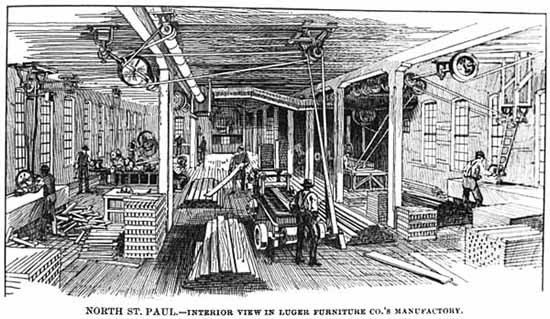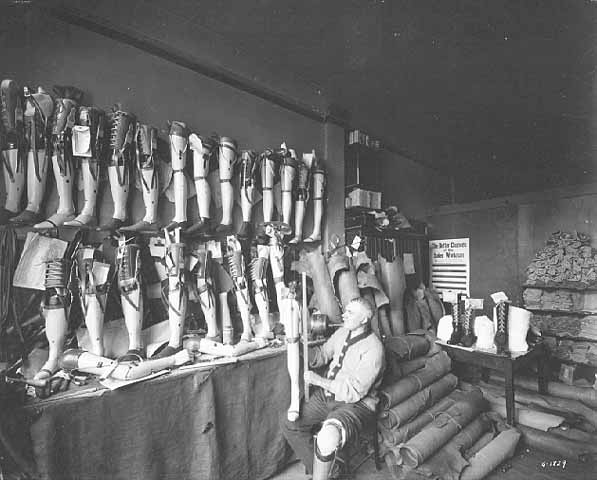What Are Those Belts?

Notice the belts running from a shared overhead pole directly to each machine.
North St. Paul. Interior view in Luger Furniture Co.'s Manufactory, ca. 1888.
Minnesota Historical Society Art Collection, Location no. HD4.8 p2 Negative no. 14028
Before widespread use of electricity, sawmills and other factories had to be right next to a waterfall or other form of power in order to turn a turbine which then powered the machines directly through a series of shafts, pulleys, and belts. (Today, each machine in a factory has its own motor which is plugged into an outlet; the electricity comes from a faraway power plant.) Direct drive was an effective and efficient way to operate a factory, but it was also dangerous: a worker's hand, hair, or clothing could get caught by the spinning belts and drawn into the machine.
Dangers of the Job

Minnesota's lumber was also carved into wooden arms and legs for the many people who lost theirs in the state's dangerous jobs. For many years, Minneapolis was the largest producer of artificial limbs in the country.
Artificial Limb Company, Minneapolis, 1918.
Photographer: Charles P. Gibson
Minnesota Historical Society Photograph Collection, Location No. R7 p4 Negative No. 1193-B
From incidents reported to the Bureau of Labor Statistics
"While lacing a belt a man lost one of his fingers. The string was around his finger and it was caught by a set-screw and pulled his finger off."
"Man had part of thumb cut off on a cut-off saw. Man had his arm broken putting on a belt. Man was killed by a load of lumber falling on him. A couple of fingers were cut on saws."
"Man had his toes cut off on a slasher saw. He put his foot on the saw while fixing something near it. Another man was caught on a shaft while oiling. His arm badly hurt."
"A man was killed while putting on a belt. Another man was badly injured in the same way. The pulley broke and hit him. His arm had to be amputated."
Biennial report of the Bureau of Labor Statistics of the State of Minnesota for the two years ending 1892.

